Creating Resilience
2025 Outlook for Office Attendance
December 18, 2024 5 Minute Read

Further progress in determining where and how employees work in the future will be made in 2025, with more companies focusing on change management and workplace strategies to boost office attendance, according to a CBRE and CoreNet Global survey of 198 corporate real estate professionals.
What will office attendance look like in 2025?
Although hybrid work arrangements will remain, office attendance will increase as companies and employees align their expectations for in-office work.
Sixty-six percent of survey respondents said they expect employees to be in the office three or more days a week, on par with last year’s survey. However, there is a slight misalignment between employer expectations and employee behavior as referenced in CBRE’s 2024 Americas Office Occupier Sentiment Survey.
Figure 1: What is your company’s office attendance expectation for most employees?
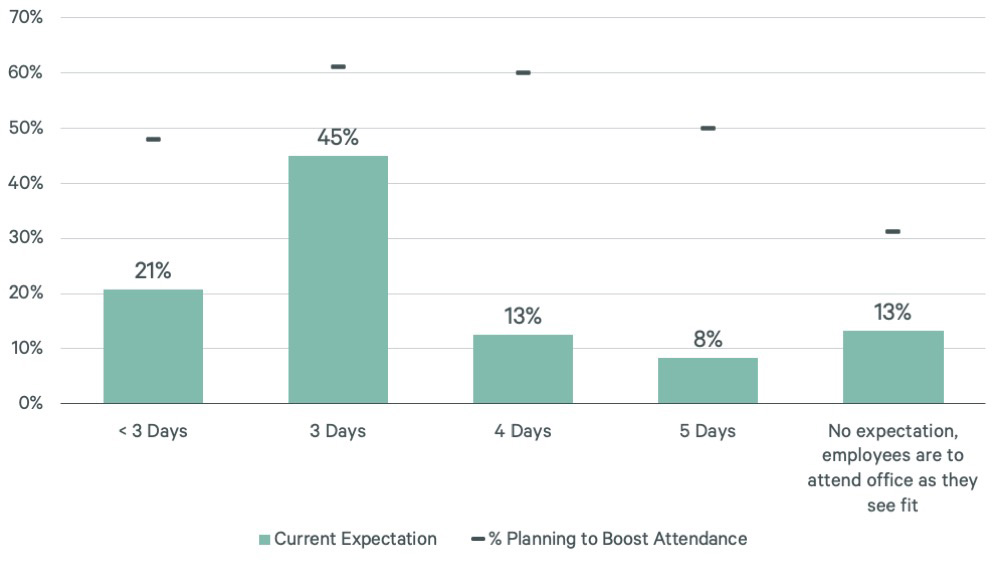
Although many occupiers are accepting current attendance rates as the new normal, 51% of corporate leaders in our survey want to boost attendance from current levels. Some of those leaders are simply trying to align attendance levels with current policy (39%), while others are looking to move toward a less hybrid policy (36%). Of the respondents who plan to change their attendance policies to require more in-office days, nearly two-thirds currently expect three days or less.
What is driving this desire for greater office attendance?
Current office attendance is believed to negatively impact interpersonal connections such as relationship building and cross-team collaboration.
The biggest obstacles to an effective and purposeful office environment that enables business success and satisfies employees are interpersonal connectivity such as relationship building (52%), cross-team collaboration (51%) and cultural connectivity (42%). These workplace objectives are difficult to achieve when office attendance is sporadic or unpredictable. Only one-quarter of respondents indicated current office attendance levels hamstring productivity.
Figure 2: In your current state of office attendance, which objective(s) for an effective and purposeful office have been most challenging?
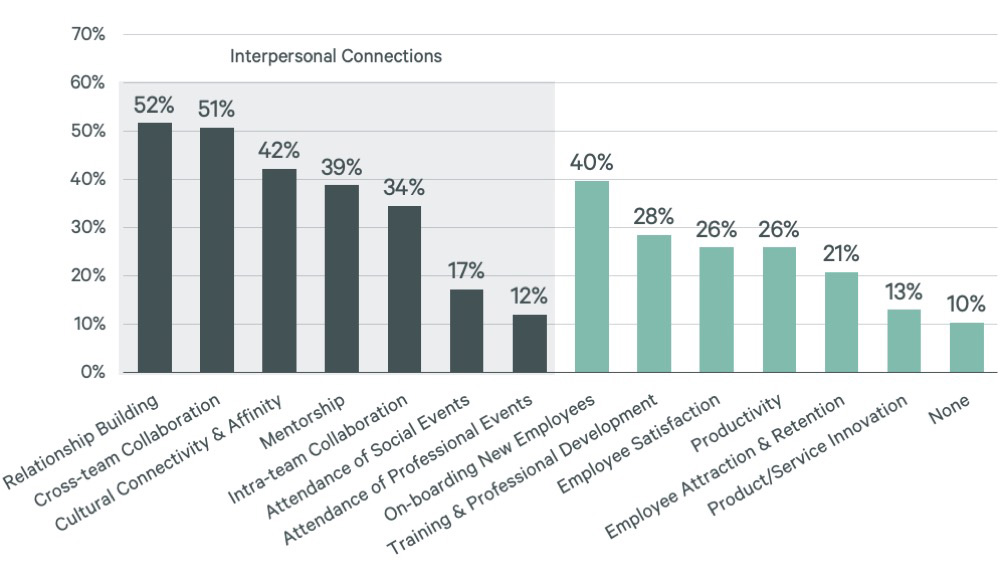
What is preventing companies from achieving greater attendance?
The barrier to greater office attendance is rooted in individual experiences such as commute time and culture much more than quality of office; lack of mandated and enforced policies is also seen as a barrier by many.
This survey confirmed a common belief that commute time is a significant factor preventing more frequent office attendance, as cited by 57% of respondents. Only 16% cited location of the office as a barrier to achieving greater attendance, suggesting that helping employees mitigate long commute times by allowing more flexible working hours is under consideration. Indeed, CBRE’s Global Live-Work-Shop report revealed a strong desire by office workers to reduce commute times to 30 minutes or less. This is why factors such as proximity to public transit, on-site car parking and electric vehicle charging stations are important factors in building selection.
The biggest barrier to increased office attendance primarily is a lack of mandated policy or its enforcement, cited by 83% of survey respondents. Other major barriers include large numbers of employees not adhering to attendance policies (47%). Although more than 50% of respondents to CBRE’s 2024 Americas Office Occupier Sentiment Survey said that their company had attendance mandates, only 17% reported that these mandates were being actively enforced.
Figure 3: Barriers to Achieving Greater Office Attendance
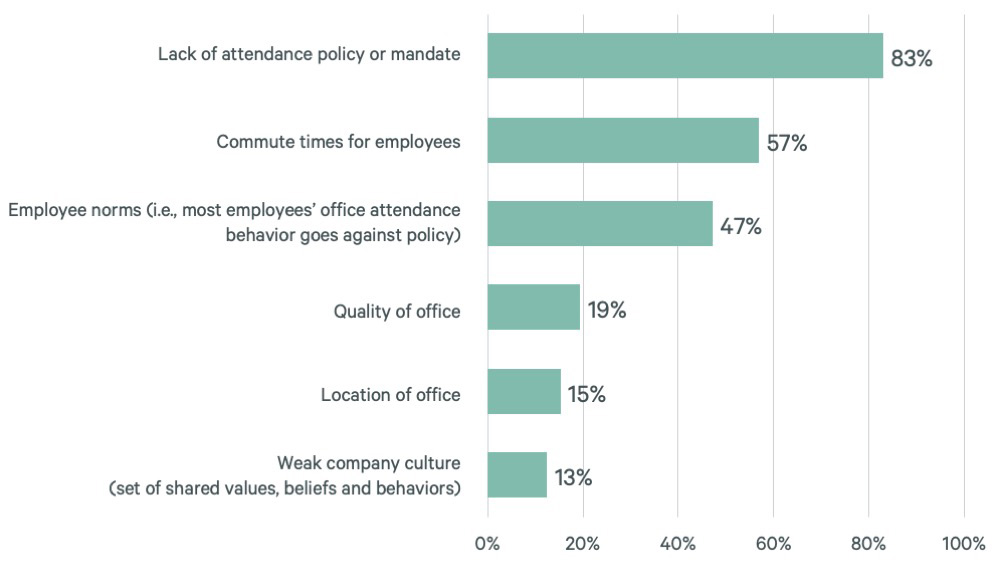
How are companies effecting workplace change?
Company leaders acting as role models and aligning attendance expectations according to job duties are two primary ways that companies are effecting change in the workplace.
More is needed than just policies, mandates and enforcement to boost office attendance. Forty-five percent of respondents indicated that they are deploying change management strategies to drive higher office attendance. Among those respondents, 66% said that company leaders acting as role models was the top strategy, followed by investment in new workplace technology (56%), manager training to align teams with attendance expectations (56%) and increased social and event programming (52%). Considering that interpersonal connections have been most challenged under current attendance levels, it’s logical that change management strategies are very people-focused.
Figure 4: What change management strategies have you deployed to drive different office attendance behaviors?
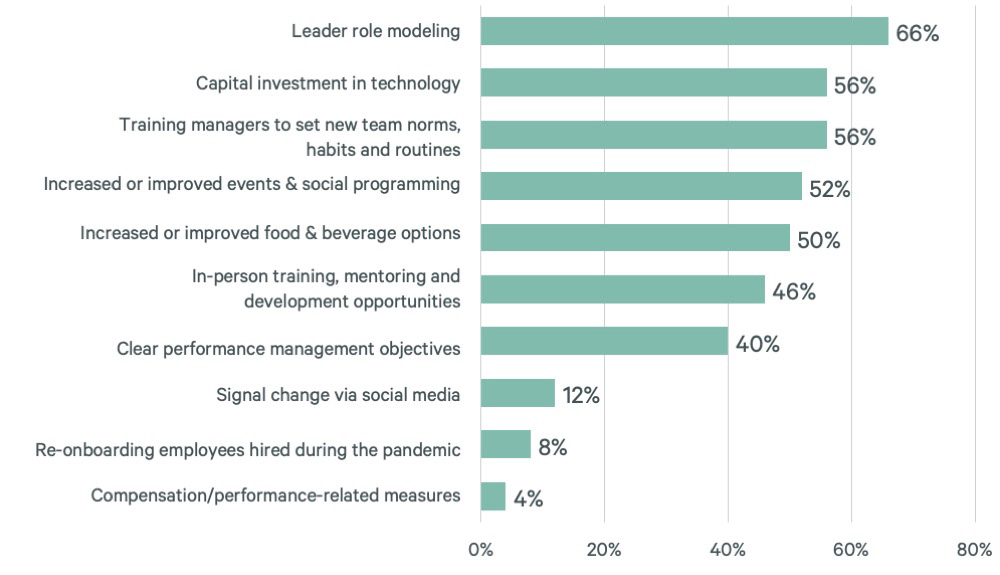
Companies appear to be taking a more targeted approach to their expectations for office attendance. Fifty-six percent of survey respondents said that their company’s attendance expectations vary based on employee role and tenure. Managers (61%), new employees (51%) and client-facing employees (41%) are more likely required to be in the office. These expectations are encouraging given the important role that leadership plays in cultivating culture and role modeling. Nevertheless, 40% do not have different attendance expectations based on employee role and tenure. Blanket attendance policies may result in a persistent mismatch between employer expectations and employee behaviors.
Figure 5: Do you have different attendance expectations for employees based on role/tenure? If so, which types of employees are required more frequently in the office?
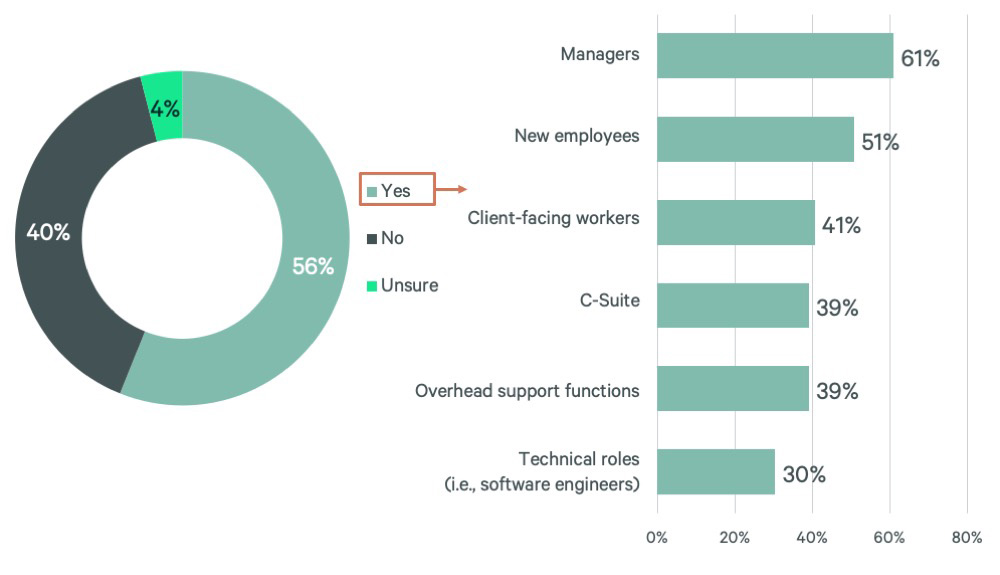
What strategies are being deployed to keep the workplace effective in the future?
Most companies are changing workplace design to reflect new working patterns, with many focusing on service and amenities for their employees despite budget constraints.
While workplace experience plays a supporting role in driving increased attendance, the office must remain effective as a business enablement tool to continue meeting company goals. Sixty-three percent of survey respondents said that their company is changing the design of its workplace to accommodate new working patterns, such as adding more amenities and activity-based spaces rather than a large amount of dedicated workstations. Upgrading services and amenities in existing buildings (45%) and relocating to better buildings (40%) are also among the most common strategies companies are adopting to improve their workplace experience. Only 16% were not changing their workplace experience at all.
Figure 6: Strategies for Amending Workplace Experience
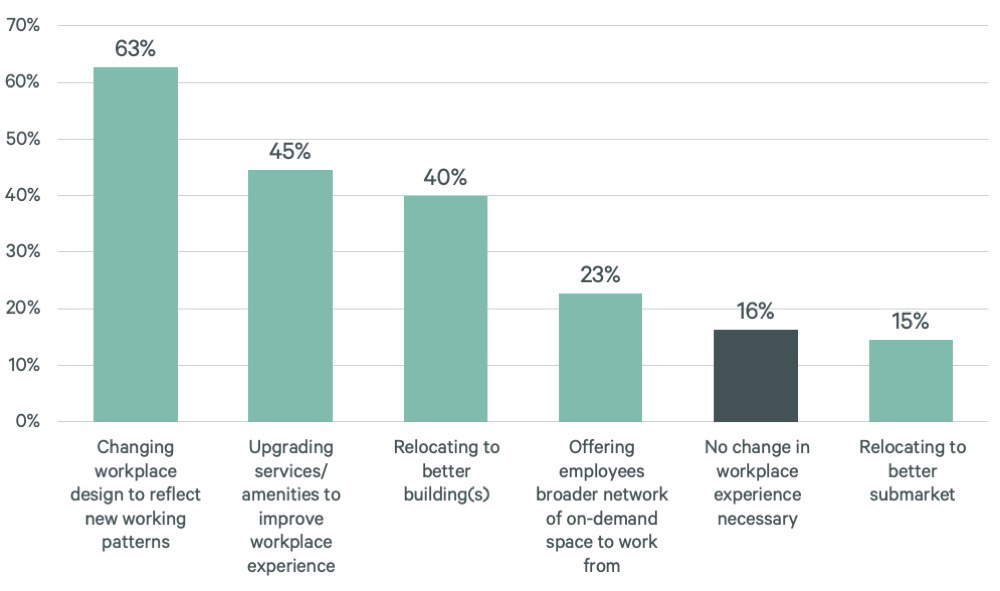
Seventy-two percent of survey respondents indicated that an uncertain economic environment is hindering efforts to create a more effective workplace. The most common challenge is insufficient capital to either reconfigure existing space (44%) or relocate to higher-quality space (33%). For 32%, a focus on operational efficiency and cost containment takes precedence over workplace effectiveness.
Figure 7: Are economic circumstances a challenge to create the future of the office?
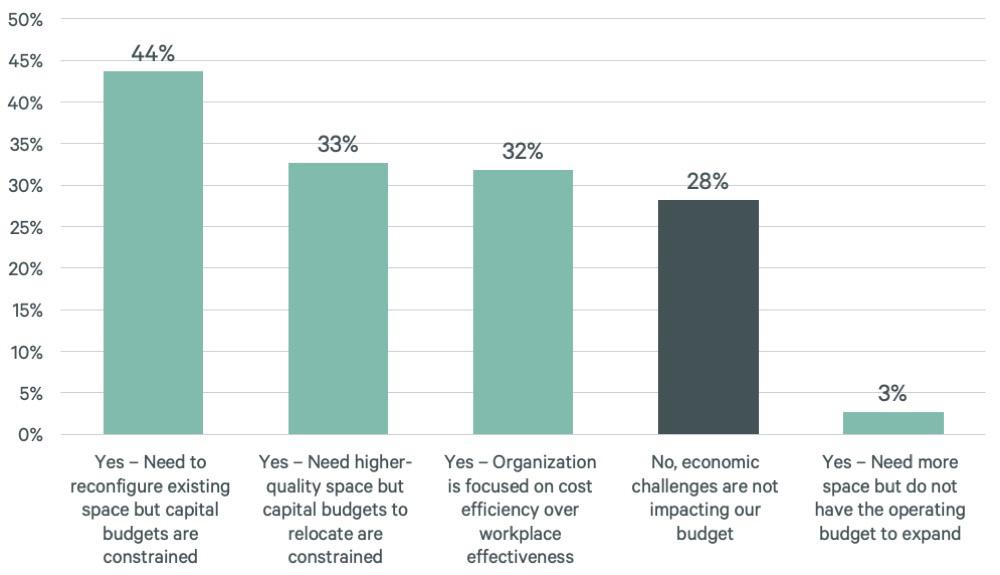
While the workplace is an important component of hybrid work, the drivers of success are employee experience, company culture and leadership strength.
Related Insights
-
Book | Adaptive Spaces
Cross-Generational Attitudes That Will Transform the Built Environment
November 28, 2022

In mid-2022, CBRE conducted a global, multi-generational survey of more than 20,000 people—from Gen Z to Baby Boomers—to understand how their attitudes and future expectations toward the way they live, work and shop have changed.
Related Service
- Property Type
Office
Use the world’s most comprehensive real estate services platform to find innovative solutions for your needs as a corporate occupier or office investor.
Contacts
Charlie Donley
Senior Research Analyst, U.S. Office Research



